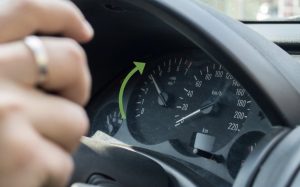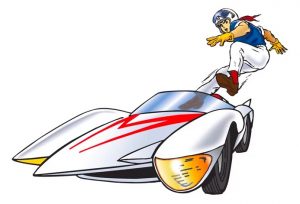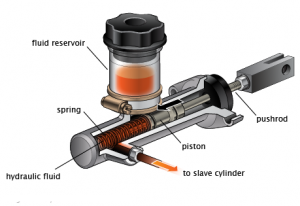If you’ve ever had that slipping feeling, you already know what it feels like when it’s time for a new clutch. You press down on the gas pedal and the engine speeds up – but your car or truck doesn’t. And then you smell that smell. Those are the clues that let you know you won’t be going much farther soon, especially if the going involves going up hills.
If you’re lucky, you’re not too far from a safe port – home or a friend’s place – where you can roll in on the inertia and not have to deal with an emergency (and expensive) tow. Usually, you’ll get some warning that the end is nigh. Those who have already had that slipping feeling will know what it portends as soon as they feel it. But if you’ve never had to deal with a clutch that’s close to the end of its life, you may not appreciate what that weird sensation of slipping is all about when you first feel it.
Pay attention to it – because it’s giving you fair warning that it’s going to get progressively worse. If you ignore it for too much longer, the day will come when no matter how much you push down on the gas pedal, all that will happen is the engine speeding up while you slow down and – very soon – come to an unwanted dead stop in a place that’s probably not where you wanted to stop, to the accompaniment of that smell and probably some visible smoke, too.
This is all inevitable, of course. Clutches – like brake pads – wear out eventually no matter what. Because both are literally wear items. Brake pads wear down via the friction and heat that results from clamping down on rotors to slow your vehicle. Clutches wear out for similar reasons; repeat clamping action that occurs when the clutch is engaged and disengaged. Each time that happens, you burn up a little bit of the friction material that makes up the clutch’s wear surface.
But you can delay the inevitable wearing-out for quite some time – in both cases – using similar and complementary driving techniques.
With brake pads, you can extend their service life by braking gradually and gently, ideally avoiding coming to a complete stop – as for a red light up ahead – by anticipating it and adjusting your speed in relation to it so that by the time you get to it, it has turned green and the traffic ahead of you is already moving again. Now you won’t have to stop – and that will save wear and tear on your brake pads.
The same principle applies when it comes to saving your clutch. If you avoid coming to a complete stop, it is much easier on the clutch because it does not have to deal with the entire deadweight of your vehicle when you let it out (and engage it) as you accelerate from a dead stop.
Even just a little bit of crawl is helpful insofar as longevity. Especially on hills. If you can keep ‘er moving forward, a clutch job will be farther down the road rather than nearer and sooner. Of course, this practice sometimes entails some illegality – technically – as at stop signs, where the sign says you must come to a complete stop. And sometimes, this is sound policy – if you can’t see what’s coming from either side of the stop sign or (obviously) if there is cross traffic. But there are also occasions when it is just a sign – and there is no good reason to come to a complete stop, other than it being “the law.”
If there’s no cop in sight, why come to a complete stop when it isn’t necessary – and it’s good for your clutch (and brakes)? This is a judgment call, of course. But the bottom line is avoiding unnecessary complete stops is the single best way to prolong the life of both brake pads and your car or truck’s clutch.
Another way – one that does not involve and technical foul illegalities – is to be easy with your gear-changing and your clutch work. When you’re changing from say first to second, push the clutch pedal in gently rather than stabbing at it suddenly; then ease the shifter lever into second and let the clutch out gently – but without riding it. Avoid releasing it suddenly/abruptly. This is a technique that takes a little while to master when you’re first learning to drive a vehicle with a manual transmission. But it’s easy to do once you have.
Try to avoid racing the engine as you shift through the gears. The faster the engine’s flywheel is spinning when the clutch is engaged, the faster the wear on the clutch. Try to keep in the right gear for the speed you’re driving and anticipate the need to shift so you can do it unhurriedly.
This won’t win you any races, of course. But it will contribute to a long-lived clutch.
So will not engaging the clutch – pressing the clutch pedal to the floor and holding it there – when you’re sitting at a red light or otherwise stopped. Let the clutch out – transmission in neutral – and your throw-out bearing will thank you by not failing. If it does, you’ll be doing a de facto clutch job even if you don’t need a new clutch, because the transmission has to come out to replace a bad throw-out bearing.
Same often goes for the clutch slave cylinder, which several manufacturers devilishly install inside the transmission. The clutch slave cylinder is the main component of the hydraulic system all modern (since the ’80s) manual-equipped vehicles have to make clutch engagement easier and smoother. But it is also a much-neglected component. The fluid – which is brake fluid – is often not replaced with fresh fluid per the prescribed intervals and that will accelerate the wearing out of this inexpensive component that often requires a lot of very expensive shop labor to replace.
So, check the fluid – level and color – at least once every six months. If it’s low, you may have a leak. If it’s darker than wild honey, it needs to be replaced.
If you keep on top of that – and are kind to your clutch – you might get 20 years and 200,000 miles (or more) out of it. I have.
So can you!
. . .
If you like what you’ve found here please consider supporting EPautos.
We depend on you to keep the wheels turning!
Our donate button is here.
If you prefer not to use PayPal, our mailing address is:
EPautos
721 Hummingbird Lane SE
Copper Hill, VA 24079
PS: Get an EPautos magnet or sticker or coaster in return for a $20 or more one-time donation or a $10 or more monthly recurring donation. (Please be sure to tell us you want a magnet or sticker or coaster – and also, provide an address, so we know where to mail the thing!)
If you like items like the Baaaaaa! baseball cap pictured below, you can find that and more at the EPautos store!












I miss a stick shift. Especially when towing the trailer. Sigh.
Great advice, Eric. I would also add if you can develop the skill of matching revs on downshifts it will add to the life as well. As with most things in life smooth is better than jerky.
Simple front engine/rear drive set ups are soooo much better than transaxles when it comes to doing the job as well. Not much is more satisfying than that feeling of slipping the trans back in place when the job is done.
Yeah I second that on rev matching and driving smooth – original clutch on a 2007 FJ cruiser with 240,000 miles on it… if your driving feels smooth and seamless, youre likely doing right by your clutch.
Great article Eric!
Thanks, Mike!
I take good care of my truck – and it takes good care of me!